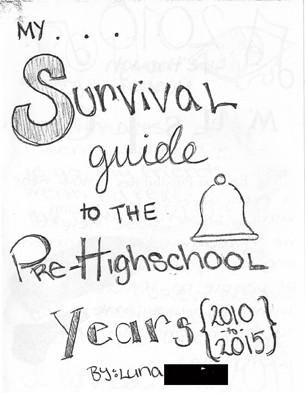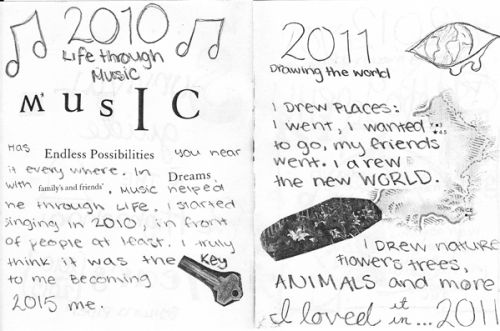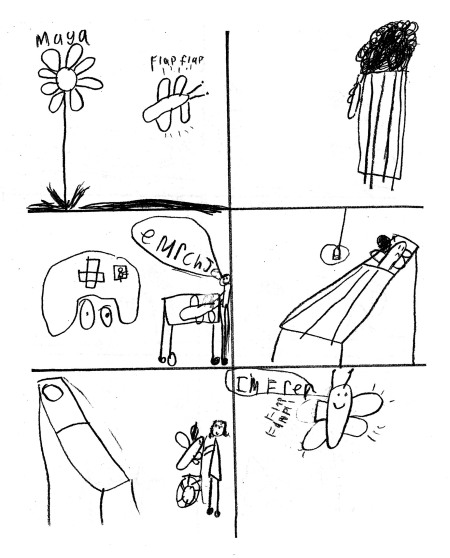By Ann Teplick, WITS Writer-in-Residence
Enter the Heart

I know when I walk through the doors of Seattle Children’s Hospital, I will enter the hive of a heart. There is so much love. I know there are families from all reaches of the planet. I know the scent of anxiety and uncertainty, and that when I walk into the classrooms, I will write poetry with youth who share what may seem impossible to imagine. I know the halo of their courage and resilience, and how I am a much stronger person because of it.
At Children’s, I write with youth in the Jan Sayers classroom—where those, whose health allows them to be around others, stay current with their school work. I also work in the Psychiatry and Behavioral Medicine Unit.
Reading and writing poetry helps me to make sense of the world. I choose, with care, which poems to bring into the classrooms, and these are the ones I dizzy over.
I know the moment I fall for a poem. Sometimes, it’s like snow that kisses an eyelash. Sometimes, like a peacock that fans its teal.
When I find a poem I love, I read it many times. I don’t try to dismantle its weave, to understand it. I sit with it, and tuck it beneath my pillow. I listen to its music—its Yo-Yo Ma, its Mic Jagger, its Merle Haggard, its B.B. King.
Enter the Cow

One poem I love, and often open my residencies with, is Joyce Sutphen’s “Things I Know.” This is a poem about growing up on a farm. Which appeals to me because it’s not my experience. I love the imagery, from the subtle turn of a cow’s head, to the chicken pecking gravel, to the rain that slides in silver chains over the machine shed’s roof. I love the way the poem ends, the knowing of everything: “trunk by branch by leaf into sky.”
THINGS I KNOW
by Joyce Sutphen
I know how the cow’s head turns
to gaze at the child in the hay aisle;
I know the way the straw shines
under the one bare light in the barn.
How a chicken pecks gravel into silt
and how the warm egg rests beneath
the feathers—I know that too, and
what to say, watching the rain slide
in silver chains over the machine
shed’s roof. I know how one pail
of water calls to another and how
it sloshes and spills when I walk
from the milk-house to the barn.
I know how the barn fills and
then empties, how I scatter lime
on the walk, how I sweep it up.
In the silo, I know the rung under
my foot; on the tractor, I know
the clutch and the throttle; I slip
through the fence and into the woods,
where I know everything: trunk
by branch by leaf into sky.
Sutphen’s “Things I Know” is an invitation to any writer to share their bounty of knowing. Their area of expertise. When one is challenged with illness, it’s easy to misplace the compass that steers us to our strengths.
I begin the conversation by asking my students what they feel they are good at, what they know well. We generate a group list, which has included knowing how to scramble an egg; knowing how to irritate our mothers, fathers, and siblings; knowing how to lie; alienating others; pretending we are okay; breaking hearts; mending hearts; playing baseball; playing the trumpet; loneliness; being confused; swimming; sleeping; snoring; telling jokes; trying to be perfect; sabotaging ourselves; planting a garden; skateboarding; and teaching our hamsters tricks.
I then read “Things I Know,” which is followed by a group reading—each of us with a couplet. I love when many voices ring the room with a poem.
We talk about what we’ve noticed about this poem. It’s written in couplets. The words “I Know” repeat themselves many times. We talk about the way repetition underscores importance, and creates rhythm in a piece of writing. We talk about words, phrases, and images that we like, and why. We talk about what we don’t fancy, and where we have questions. We talk about the poem’s small moments, and overall, what the author might be trying to say. We share similar experiences to that of the narrator, if we have them. We shower the poem with sweet-smelling hay. But really, the poem showers us. Here are some of the student poems inspired by Joyce Sutphen’s “Things I Know.”
I KNOW FISHING (age 10)
I know how to catch fish in rivers,
lakes and oceans.
I know how to put baits and hooks
on my line.
I know you have to be patient
while waiting for fish to bite.
I know where to fish
by using my polarized glasses.
I’ve known fishing for seven years
and counting.
A BRUSH WITH DEATH (age 16)
The euphoria of staying afloat,
a pitch-black warmth of a mother’s womb.
The detachment and the praying at night,
the still silent air with the vibrancy
of a dirty old tomb.
It numbs moon-touched skin and pulls
you to the heat of your core.
The way you wake up in the middle of the night,
caramelized eyes, that cracked-open door.
Sweat that runs with the salt and the blades
that slide through your abdomen
and past pale skin.
It’s the realization,
the finality,
dread that your death will be painful.
The invisible warmth of a loving hand,
the after-glow of another worldly night.
A God-given gift.
What’s it like to wake up the next day?
Determined and willing to fight.
This is what I know.
I KNOW HOW TO LOVE LIFE, EVEN WHEN IT HATES ME (excerpt, age 17)
I know how it feels when life hates you,
when nothing goes right, and everything goes wrong.
I know how it feels to want to give up.
Such an easy way out can be tempting.
I know it’s hard to try to love life,
when all you see when you look around is bad.
I know you will find plenty to love, though,
if you look closely at the things you may feel are small.
I know sometimes I feel lonely here,
and think that my friends have forgotten me.
But I know they are just busy and stressed
and they don’t know how to talk to me in this situation.
I know that my illnesses will always be there
and some will worsen with time.
But I know I have family and friends around me
who will help me live the most fulfilling life I can.
Here are two poems, also inspired by Joyce Sutphen’s “Things I Know,” which were written collaboratively by students at Children’s and students at Mercer Island High School, in a special project this spring—
I KNOW WATER (ages 11 and 16)
I know how to swim. Diving into the cool blue water.
I know how the water tastes like bleach and burns your nose.
I know how to propel the water and pull myself forward.
I know the rush of waves crashing against me when I’m racing to the finish.
I know how the butterflies in my stomach feel when I step onto the block.
I know how they fly away as soon as I hit the water.
I know how looking at my coach, and hearing his words of support and congratulation, make me feel relieved.
I wish that diving off the block would be easier for me.
But I know how swimming lights my day.
I KNOW WARM VELVET (ages 14 and 16)
I know how to make delicious red velvet cupcakes.
I know how to cream the butter with the sugar
and crack the pale eggs on the side of the metal bowl.
I know how the machine rhythmically clinks and beats as it mixes the deep red batter.
I know how to pour the silky batter into the pan and smooth it out.
I know how to put the cupcakes into the oven with careful hands,
feeling the warm rush of heat brush across my rosy checks.
I wish I knew how they tasted as I wait impatiently for them to finish baking.
I hear the timer ding, and I know how it feels to take the first bite
of the warm, moist cake; how it delights my taste buds.
Enter the Caterpillar

Amy Gerstler is a poet whose work I love, as well. Her “Advice from a Caterpillar,” is another poem I’ve tucked beneath my pillow. It’s crisp and witty, with advice that articulates the precision of a bulls-eye.
ADVICE FROM A CATERPILLAR
by Amy Gerstler
Chew your way into a new world.
Munch leaves. Molt. Rest. Molt
again. Self-reinvention is everything.
Spin many nests. Cultivate stinging
bristles. Don’t get sentimental
about your discarded skins. Grow
quickly. Develop a yen for nettles.
Alternate crumpling and climbing. Rely
on your antennae. Sequester poisons
in your body for use at a later date.
When threatened, emit foul odors
in self-defense. Behave cryptically
to confuse predators: change colors, spit,
or feign death. If all else fails, taste terrible.
I use this poem to compliment Sutphen’s “Things I Know,” because in life’s grand scheme—first, we know things; then, we know them well; and finally, we can dish out advice, right? Here are some of the student poems inspired by the caterpillar.
HOW TO READ MINDS (age 10)
First, buy a high-tech radio. Then, take it apart
and keep all the important things from the radio.
Next, buy a hat and a small satellite
and mount it on the hat. Now, go to the market
and buy hamburger ingredients to grill the patty.
And put the parts of the radio in the patty.
Then, put the burger together and eat it.
Put your hat on and wear headphones.
Now, plug the headphone into your satellite dish
and listen to people’s thoughts.
HOW TO FIX A LAPTOP (age 9)
First, what you could do is take apart the computer and wipe out
the memory card. If that doesn’t work, you can throw it in the
trash. Then take apart the computer and burn four red wires. Cut
three yellow wires and drop it in the sink. What you want to do
next is connect the yellow wires with the green wires. Then put
the computer back together and carry it to the ocean. When the
computer gets to the ocean, I’m going to tie dynamite to it and
light it and then throw it in the ocean. Bye-bye computer.
ADVICE ABOUT A KIDNEY TRANSPLANT (age 12)
It’s sore after the surgery.
It feels like you can’t move,
like you’re paralyzed.
If you move, if feels like you’ve been stabbed
a million times in your side.
After a week, you can try to get up
and walk around.
My first step felt weird, like I was taller,
because you grow and you don’t even feel it.
Don’t start running around.
You’ll feel limpy like an old man.
But the more you walk, eventually
the better you’ll feel.
ADVICE TO MYSELF (excerpt, age 15)
You aren’t defined by who you were,
but who you are now.
Remember, you are not dirt,
don’t let others treat you like that.
You are skillful in many things,
my little divergent.
Use your skills to help, not hurt,
especially yourself.
Stop beating yourself up
with the many “yous.”
Look at the limits you draw
yourself.
Pretend you have forgotten, and slip through.
Peace will never exist,
it is simply an illusion, along with hope,
but be the fool who uses illusion for comfort.
ADVICE TO ME (age 13)
Be true to who you are.
Don’t let people change you.
Hold yourself together.
Safety pin by safety pin, fix your torn heart.
Smile. Laugh. Giggle. Joke.
Be what you want to be.
Watch the slowly ticking clock.
Watch the hours tick by,
counting down your time left.
Live to the fullest.
Try with no regrets.
Hold your head high.
Protect your heart and mind,
because every princess has a crown.
Don’t let yours fall.
Be true to who you are.
Hopefully, we can tuck this poet’s last line, “Be true to who you are” beneath our pillows, as we navigate our days, as we try to walk strong, as we reflect upon the things we know well—knowing nothing can take those away.















